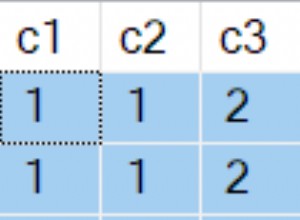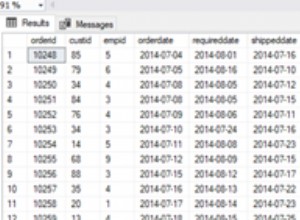Następujące zapytanie select zwróci całą tabelę i jej rozmiar
SELECT
relname as mytable,
pg_size_pretty(pg_relation_size(relid)) As size
FROM pg_catalog.pg_statio_user_tables ORDER BY pg_total_relation_size(relid) DESC;
Utwórz WIDOK z tym zaznaczeniem
CREATE VIEW vTableAndSize AS
SELECT
relname as mytable,
pg_size_pretty(pg_relation_size(relid)) As size
FROM pg_catalog.pg_statio_user_tables ORDER BY pg_total_relation_size(relid) DESC;
a teraz możesz zapytać o ten widok, aby uzyskać taki rozmiar
SELECT mytable,size
FROM vTableAndSize WHERE mytable in ('table1','table2')
Zgodnie z Komentarz OP
CREATE VIEW vTableAndSize_1 as
SELECT
relname as mytable,
(pg_relation_size(relid)) As size
FROM pg_catalog.pg_statio_user_tables ORDER BY pg_total_relation_size(relid) DESC;
i uzyskaj sumę rozmiarów wielu kolumn za pomocą
/* Get sum of specific tables */
SELECT pg_size_pretty(sum(size)) tablesizesum
FROM vTableAndSize_1 WHERE mytable in ('table1','table2')
/* Get sum of all tables */
SELECT pg_size_pretty(sum(size)) tablesizesum
FROM vTableAndSize_1
Utwórz vTableAndSize_1 w twoim PostgreSQL baza danych i zapytanie jak poniżej w twoim interfejsie (nie jestem zaznajomiony z Ruby )
ActiveRecord::Base.connection.execute("SELECT pg_size_pretty(sum(size)) FROM vTableAndSize_1
WHERE mytable in ('table1','table2')")




